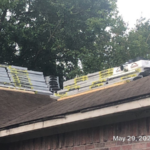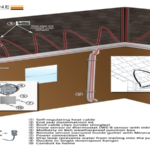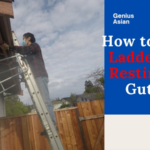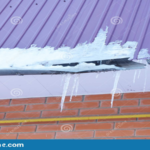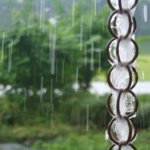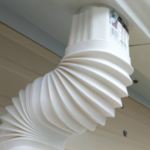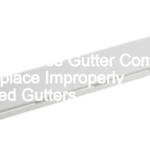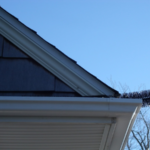If gutters are not installed properly, they can cause a number of problems. First, they can allow water to seep into the home, which can lead to mold and mildew. Second, they can cause the home’s foundation to settle unevenly, which can lead to cracking and other damage. Third, they can cause the home’s siding to rot and deteriorate. Fourth, they can cause the home’s windows and doors to leak. Finally, they can allow pests and animals to enter the home.
How do you tell if gutters are installed correctly?
If you are unsure whether your gutters have been installed correctly, you can check for a few key things. First, make sure that the gutters are sloped so that water can drain properly. They should be sloped toward the downspouts at a rate of about one inch for every 20 feet. Next, check to see that the gutters are properly secured to the fascia board and the house. They should be screwed in place so that they are snug against the house. Finally, check the downspouts to make sure that they are properly attached and that water can flow freely through them.
What is the most common problem with gutters?
The most common problem with gutters is that they can become clogged with leaves, twigs, and other debris. This can cause water to back up and overflow, which can damage your home’s foundation or cause other problems.
How do you fix improperly pitched gutters?
One way to fix improperly pitched gutters is to use gutter hangers. Gutter hangers are L-shaped brackets that attach to the fascia board and hold the gutter in place. Another way to fix improperly pitched gutters is to use gutter straps. Gutter straps are U-shaped brackets that attach to the rafters and hold the gutter in place.
What issues can not having gutters cause?
If you don’t have gutters, water can pool on your roof, which can lead to a leaky roof and water damage to your home. Not having gutters can also lead to soil erosion around your foundation, which can lead to foundation damage. Additionally, when it rains, water can splash up from the ground and onto your home’s siding, which can lead to mold and mildew growth.
Can gutters be repitched?
Gutters can be repitched, but the process is not as simple as it may seem. The first step is to remove all the debris from the gutters, which can be a time-consuming and messy task. Once the gutters are clean, you’ll need to measure the angle of the gutter and mark where you need to cut the gutters to repitch them. This is a tricky process and it’s important to get it right, otherwise your gutters will leak. After cutting the gutters, you’ll need to reattach them to the house using new brackets and screws. Finally, you’ll need to seal the gutters with caulk to prevent leaks.
Are gutters supposed to be flush with house?
Your gutters should be flush with your house in order to ensure that they are able to do their job properly. If your gutters are not flush with your house, then they may not be able to catch all of the water that comes off of your roof and this could lead to water damage to your home.
Is there supposed to be standing water in gutters?
There are a few reasons why standing water might form in your gutters. One possibility is that the gutters are installed at the wrong angle, causing water to pool instead of flowing away. Another possibility is that there is something blocking the gutters, such as leaves or debris, which prevents the water from flowing through. If you think either of these might be the case, you should contact a professional to take a look and fix the problem.
In some cases, standing water in gutters is actually intentional. This can be the case if you have a rain barrel or other water collection system set up to collect water from your gutters. In this case, the standing water is not a problem, and is actually part of the system. However, if you do not have a water collection system and there is standing water in your gutters, it is likely a problem that needs to be fixed.
How do you test rain gutters?
One way to test your rain gutters is to pour a gallon of water into the gutter and see how long it takes to drain. Another way is to use a hose to simulate a downpour and see if the gutters overflow.
Are gutters supposed to overflow?
No, gutters are not supposed to overflow. They are designed to collect and channel water away from your home, and if they are overflowing, it is likely because they are clogged. Leaves, twigs, and other debris can build up in your gutters and cause them to become blocked, which prevents water from flowing through them properly. If you notice that your gutters are overflowing, you should clean them out as soon as possible to prevent water damage to your home.
Last Word
If gutters are not installed properly, they can cause a number of problems. First, they can allow water to seep into your home, which can lead to mold and mildew. Second, they can cause your home to rot and deteriorate. Third, they can attract insects and other pests. Finally, they can cause your home to look unsightly.

